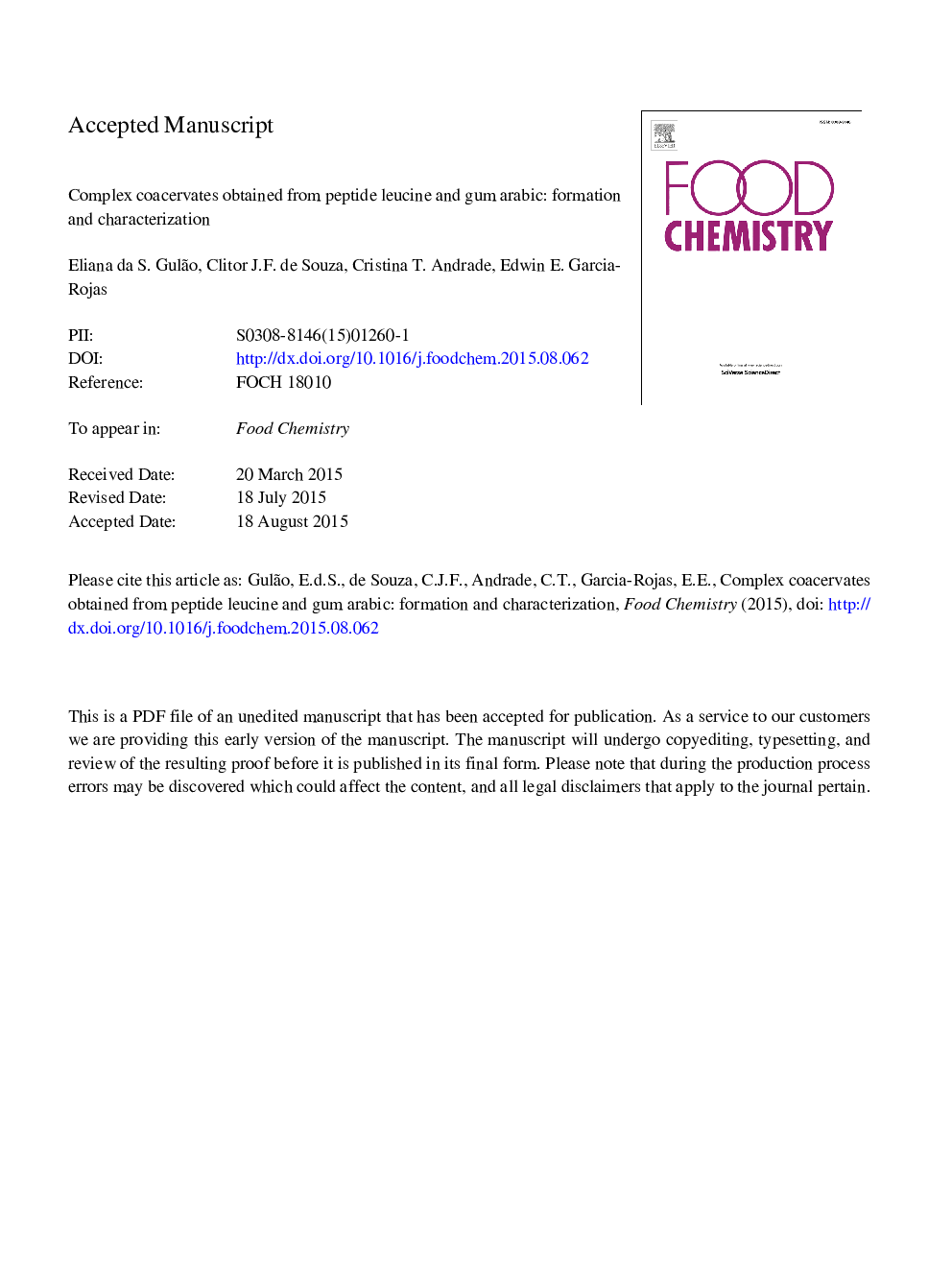| Article ID | Journal | Published Year | Pages | File Type |
|---|---|---|---|---|
| 7590451 | Food Chemistry | 2016 | 25 Pages |
Abstract
In this study, interactions between polypeptide-leucine (0.2% w/w) and gum arabic (0.03, 0.06, 0.09, 0.12, and 0.15% w/w) were examined at concentrations of NaCl (0, 0.01, 0.25, 0.3, 0.5Â mol/l) and at different pH values (from 1.0 to 12.0). Formation of insoluble complex coacervates was highest at pH 4.0. At pH 2.0, which is the pKa of the gum Arabic, the dissociation of precipitate occurred. The pHÃ2 positively shifted with the addition of higher concentrations of salt. Samples containing 0.2% PL and 0.03% GA and no salt had higher turbidity and increased formation of precipitates showing greater turbidity and particle sizes. The Fourier transform infrared spectroscopy confirms the complex coacervate formation of leucine and gum arabic, and rheological measurements suggest the elastic behavior of 0.2% PL and 0.03% GA complex. Overall, the study suggests that complex coacervates of PLs could be one feasible ways of incorporating amino acids in food products.
Related Topics
Physical Sciences and Engineering
Chemistry
Analytical Chemistry
Authors
Eliana da S. Gulão, Clitor J.F. de Souza, Cristina T. Andrade, Edwin E. Garcia-Rojas,
